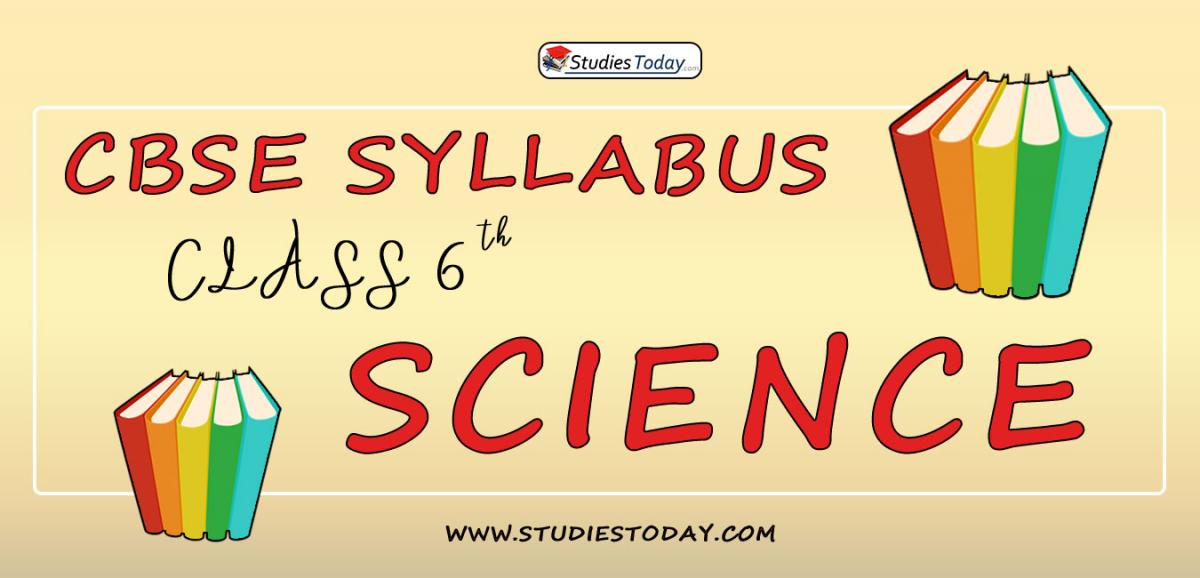Download CBSE Class 6 Syllabus for Science 2023 2024. Refer to the latest syllabus provided below and free download latest curriculum of Class 6 for Science issued by CBSE and NCERT, free download in pdf, get topic wise weightage, suggested readings and books based on latest syllabus and guidelines. The Science Class 6 Syllabus curriculum has been developed and issued by CBSE and NCERT for Science in Class 6. All students studying in Class 6 are suggested to go through latest syllabus to ensure that their preparation is as per the latest syllabus issued by CBSE NCERT KVS. Class 6 Science students should do preparation for Science exam strictly based on the latest curriculum and concentrate more on the topics with higher weightage to help them score higher marks in Class 6 Science class tests and exams
Class 6 Science Syllabus
It is important for students to study as per the latest Class 6 Science curriculum and marks breakup as per important topics. This will help to prepare properly for the upcoming examination. You can click on the following links to download the latest and past year syllabus provided by us below.
Year Wise Science Syllabus Class 6
| Questions | Key Concepts | Resources | Activities/ Processes |
|
1. Food Components of food
Cleaning food |
Plant parts and animal
Carbohydrates, fats,
Threshing, winnowing, |
Examples of food from
Mid Day Meal; Charts,
Talking to some elders |
(Periods - 20)
Studying the variety of food in different regions in India; preparing a menu of balanced diet in the context of the diversity of foods eaten in different parts of the country. Discussion on threshing, |
|
2. Materials
Are some of our clothes made of materials
|
Different types of cloth materials – cotton, wool,
|
Sharing of prior knowledge with parents
|
Whole class discussion. Simple activities to
Whole class discussion.
|
|
3. The World of the Living
Plants – form and
Animals – form and |
L i v i n g / n o n - l i v i n g
plants and animals show
Morphological structure
Structure and functions of
|
Recollection of diversity
Plants, flowers, blade,
Observation of nature; |
Listing of things around
us; prepare herbarium
Studying plant parts –
Activities to study X-rays, |
| 4. Moving Things, People and Ideas Moving How did people travel from one place to another in earlier times? How did they know how far they had travelled? How do we know that something is moving? How do we know how far it has moved? |
Need to measure distance (length). Measurement of length. Motion as change in position with time. |
Everyday experience; equipment (scale etc.) to measure length. Stories for developing contexts for measuring distances. |
(Periods - 12) Measuring lengths and distances. Observation of different types of moving objects on land, in air, water and space. Identification and discrimination of various types of motion. Demonstrating objects having more than one type of movement (screw motion, bicycle wheel, fan, top etc.) Observing the periodic motion in hands of a clock / watch, sun, moon, earth. |
|
5. How things work Do all materials allow
Magnets Where on a magnet do How do two magnets |
Electric current: Electric Conductor, Insulator.
Magnet. Like poles repel and |
Torch: cell, bulb or led, wires, key. Mica, paper, rubber,
Magnet, iron pieces. |
Activity using a bulb, cell and Experiment to show that
Demonstrating how |
|
6. Natural Phenomena
When are shadows |
Evaporation and
A shadow is formed only |
Previous experience, Child’s own experience, |
(Periods - 26) Discussion; observing Observing differences
|
|
7. Natural Resources
Importance of air
Waste |
Importance of water,
Some animals and plants live in water; some live on land and some live in respire. |
Experience,newspaper
Experience. upper layers of soil; but |
Estimation of water used by a family in one day, one month, one year.
Discussion.
Survey of solid waste |
You can download the CBSE 2025 Syllabus for Class 6 Science for latest session from StudiesToday.com
Yes, you can click on the links above and download Syllabus in PDF for Class 6 for Science
Yes, the syllabus issued for Class 6 Science have been made available here for latest 2025 academic session
You can easily access the links above and download the Class 6 Syllabus Science
There is no charge for the Syllabus for Class 6 CBSE Science you can download everything free
Planning your studies as per syllabus given on studiestoday for Class 6 subject Science can help you to score better marks in exams
Yes, studiestoday.com provides all latest CBSE Class 6 Science Syllabus with suggested books for current academic session
Yes, studiestoday provides curriculum in Pdf for Class 6 Science in mobile-friendly format and can be accessed on smartphones and tablets.
Yes, syllabus for Class 6 Science is available in multiple languages, including English, Hindi


